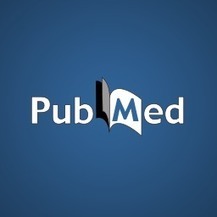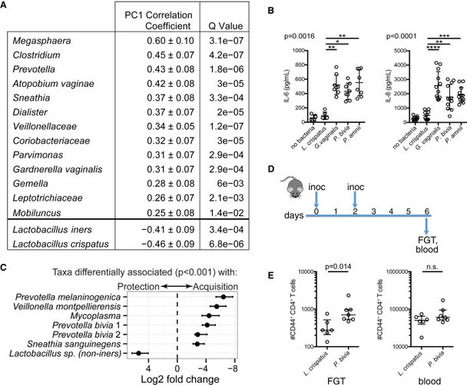 Your new post is loading...
 Your new post is loading...
We review our current understanding of adaptive immune responses to the fetoplacental allograft, emphasizing the divergent responses observed for trophoblast- v
Andres Salumets has been appointed as Professor of Reproductive Medicine at the Division of Obstetrics & Gynecology, Department of Clinical Science, Intervention and Technology - CLINTEC.
The chair was established with a generous grant from a Swedish Company - Vitrolife (10 MSEK/5 years) and will be co-financed by the Center for Innovative Medicine - CIMED.
Previously, we demonstrated up-regulated activated CD4+ and CD8+ T lymphocytes as well as up-regulated cytotoxic NK cells in the blood of patients with idiopathic recurrent miscarriage. In the present study, we tried to identify deficiencies in counter-regulating immune mechanisms of these patients.

|
Suggested by
LIGHTING
|
Theriogenology. 2017 Aug 10;104:62-71. doi: 10.1016/j.theriogenology.2017.08.010. [Epub ahead of print] Review
Human milk provides a very wide range of nutrients and bioactive components, including immune factors, human milk oligosaccharides, and a commensal microbiota. These factors are essential for interconnected processes including immunity programming and the development of a normal infant gastrointestinal microbiome. Newborn immune protection mostly relies on maternal immune factors provided through milk. However, studies dealing with an in-depth profiling of the different immune compounds present in human milk and with the assessment of their natural variation in healthy women from different populations are scarce. In this context, the objective of this work was the detection and quantification of a wide array of immune compounds, including innate immunity factors (IL1β, IL6, IL12, INFγ, TNFα), acquired immunity factors (IL2, IL4, IL10, IL13, IL17), chemokines (IL8, Groα, MCP1, MIP1β), growth factors (IL5, IL7,EGF, GCSF, GMCSF,TGFβ2) and immunoglobulins (IgA, IgG, IgM), in milk produced by healthy women of different ethnicities living in different geographic, dietary, socio-economic, and environmental settings. Among the analyzed factors, IgA, IgG, IgM, EGF, TGFβ2, IL7, IL8, Groα, MIP1β were detected in all or most of the samples collected in each population and, therefore, this specific set of compounds might be considered as the “core” soluble immune factors in milk produced by healthy women worldwide. This approach may help define which immune factors are (or are not) common in milk produced by women living in various conditions, and to identify host, lifestyle, and environmental factors that affect the immunological composition of this complex biological fluid.
Breast milk bacteria influence the establishment and development of the infant gut microbiome with continued impact after solid food introduction.
Introduction Gastroenteritis is the leading cause of morbidity and mortality among young children living in resource-poor settings, majority of which is attributed to rotavirus. Rotavirus vaccination can therefore have a significant impact on infant mortality. However, rotavirus vaccine efficacy in Sub-Saharan Africa and Southeast Asia is significantly lower than in high-income countries. Maternally derived antibodies, infant gut microbiota and concomitant oral polio vaccination have been proposed as potential reasons for poor vaccine performance in low-income settings. The overall aim of this study is to compare the role of maternally derived antibodies and infant gut microbiota in determining immune response to rotavirus vaccine in high-income and low-income settings, using the same vaccine and a similar study protocol.
Methods and analysis The study is an observational cohort in three countries—Malawi, India and UK. Mothers will be enrolled in third trimester of pregnancy and followed up, along with infants after delivery, until the infant completes two doses of oral rotavirus vaccine (along with routine immunisation). The levels of prevaccination maternally derived rotavirus-specific antibodies (IgG) will be correlated with infant seroconversion and antibody titres, 4 weeks after the second dose of rotavirus vaccine. Both within-country and between-country comparisons of gut microbiome will be carried out between children who seroconvert and those who do not. The impact of oral polio vaccine coadministration on rotavirus vaccine response will be studied in Indian infants.
Ethics and dissemination Ethical approvals have been obtained from Integrated Research Application System (IRAS, NHS ethics) in UK, College of Medicine Research and Ethics Committee (COMREC) in Malawi and Institutional Review Board (IRB), Christian Medical College, Vellore in India. Participant recruitment and follow-up is ongoing at all three sites. Analysis of data, followed by publication of the results, is expected in 2018.
BJOG. 2017 Mar;124(4):606-611. doi: 10.1111/1471-0528.14390. Epub 2016 Nov 7. Review
The potential impact of cervicovaginal bacteria on HIV susceptibility is not well-defined.
Gosmann et al. (2017) identify anaerobic cervicovaginal bacterial communities and
specific taxa highly prevalent in young healthy South African women that increase
their HIV risk. These findings might be leveraged to reduce HIV acquisition in women.
In humans, parturition is currently viewed as an intrauterine outbreak of inflammation, accompanied by a massive release of proinflammatory cytokines at the maternal–fetal interface that comprises the maternal decidua, placenta, and fetal membranes. At term, fetal membranes overlying the cervix, the future site of rupture, show altered morphology and are termed the zone of altered morphology (ZAM). These alterations occur in normal fetal membranes during late pregnancy, in preparation for labor. In this study, transcriptome, flow cytometry, electron microscopy, and immunohistochemistry analyses collectively highlight a local shift in gene expression and lymphocyte activation in the ZAM. Just before labor, we show that highly polymorphic HLA-A, -B, and -C determinants of fetal origin are selectively exposed in the ZAM to the maternal immune system. A graft rejection-like program occurs in the ZAM, which involves 1) the activation of cytotoxic decidual NK cells, and 2) the decline of decidual immunotolerant M2-like macrophages. Comparison with a prior cohort of fetal membranes shows that acute inflammation only takes place after these first steps of immune modifications. Our results therefore strongly argue in favor of local immune remodeling at the onset of parturition.
|
The role of the maternal immune system in reproductive success in humans remains controversial. Here we focus on the events that occur in the maternal decidua during the first few weeks of human pregnancy, because this is the site at which maternal leukocytes initially interact with and can recognize fetal trophoblast cells, potentially involving allorecognition by both T cells and natural killer (NK) cells. NK cells are the dominant leukocyte population in first-trimester decidua, and genetic studies point to a role of allorecognition by uterine NK cells in establishing a boundary between the mother and the fetus. By contrast, definitive evidence that allorecognition by decidual T cells occurs during the first trimester is lacking. Thus, our view is that during the crucial period when the placenta is established, damaging T cell-mediated adaptive immune responses towards placental trophoblast are minimized, whereas NK cell allorecognition contributes to successful implantation and healthy pregnancy. Major human pregnancy disorders arise from the failure of placental trophoblast to access sufficient supplies of maternal oxygen and nutrients. Key to understanding this process are the interactions that occur early in pregnancy between trophoblast cells that invade the decidua and maternal uterine immune cells.

|
Suggested by
LIGHTING
|
Mucosal Immunology is the official publication of the Society of Mucosal Immunology (SMI). It aims to provide a forum for both basic and clinical scientists to discuss all aspects of immunity and inflammation involving mucosal tissues. The journal reflects the interests of scientists studying gastrointestinal, pulmonary, nasopharyngeal, oral, ocular, and genitourinary immunology through the publication of original research articles, scholarly reviews, and timely commentaries, editorials and letters.
Human Milk Oligosaccharides Exhibit Antimicrobial and Antibiofilm Properties against Group B Streptococcus
T helper type 17 (Th17) cells play an important role in immunity to fungal and bacterial pathogens, although their role in the female genital tract, where exposure to these pathogens is common, i
Tenofovir is a preexposure drug used to prevent HIV infection. In clinical trials, tenofovir was effective for men, but not women. Klatt et al. now show that tenofovir efficacy in women depends on the composition of the vaginal microbiome (see the Perspective by Tuddenham and Ghanem). In a clinical trial of 688 women, tenofovir was three times as effective among those with a Lactobacillus -dominant vaginal microbiome as it was among other women. Gardnerella vaginalis tended to predominate in the women for whom tenofovir was less effective, and the authors found that the organism could rapidly metabolize and thereby inactivate the drug.
Science , this issue p. [938][1]; see also p. [907][2]
[1]: /lookup/doi/10.1126/science.aai9383
[2]: /lookup/doi/10.1126/science.aan6103
New Abbott data presented this week, at the 50th Annual Congress of the European Society for Paediatric Gastroenterology, Hepatology and Nutrition (ESPGHAN) in Prague, further supports the important role Human Milk Oligosaccharides (or HMOs) play in supporting the immune system of formula-fed babies. It all starts in the digestive system.
PLoS Pathog. 2017 Feb 27;13(2):e1006247. doi: 10.1371/journal.ppat.1006247. [Epub ahead of print]
More than ten thousand liters of air enter the lungs on a given day, but it’s not just oxygen that fills the lungs; pathogens and pollutants also hit
Endometriosis is a chronic gynecological inflammatory disease characterized by the presence of functional endometrial glands and stroma outside of the uterine cavity. It affects 7–10% of women of reproductive age and up to 50% of women with infertility. The current gold standard for the diagnosis combines laparoscopic evaluation and biopsy of the visualized lesions. However, laparoscopy requires general anesthesia and developed surgical skills and it has a high procedural cost. In addition, it is associated with the risk, although rare, of potential intraoperative or postoperative complications. To date, several noninvasive biomarkers have been proposed; however, no definite diagnostic biomarker is yet available. The aim of this study was to characterize the CM proteome in patients with endometriosis using high resolution mass spectrometry—based proteomics, implemented by bioinformatic tools for quantitative analysis, in order to investigate the pathophysiological mechanisms of endometriosis. Cervical mucus samples were collected from patients affected by endometriosis and fertile controls. An aliquot of the soluble acidic fraction of each cervical mucus sample, corresponding to 0.5 mg of total protein, was left to digest with sequencing grade modified porcine trypsin. The peptides were analyzed by LC–MS/MS on a high resolution Orbitrap Elite mass spectrometer and data were evaluated using bioinformatic tools. We aimed at the first total profiling of the cervical mucus proteome in endometriosis. From the list of identified proteins, we detected a number of differentially expressed proteins, including some functionally significant proteins. Six proteins were quantitatively increased in endometriosis, almost all being involved in the inflammatory pattern. Nine proteins were quantitatively reduced in endometriosis, including some proteins related with local innate immunity (CRISP-3 and Pglyrp1) and protection against oxidative stress (HSPB1). Fifteen proteins were not detected in endometriosis samples including certain proteins involved in antimicrobial activity (SLURP1 and KLK13) and related to seminal plasma liquefaction and male fertility (KLK13). This is the first application of high resolution mass spectrometry—based proteomics aimed in detecting an array of proteins in CM to be proposed for the noninvasive diagnosis of endometriosis. This chronic disease presents in CM an inflammatory protein pattern.
|
 Your new post is loading...
Your new post is loading...
 Your new post is loading...
Your new post is loading...





















